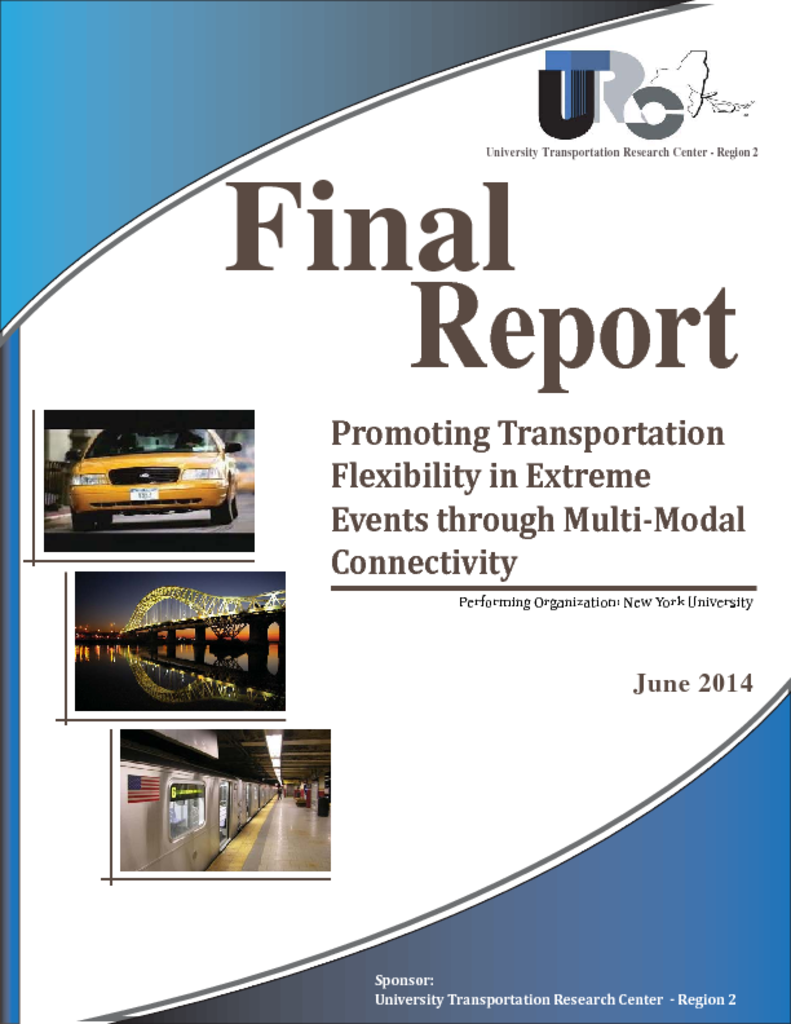Extreme events of all kinds are increasing in number, severity, or impacts. Transportation provides a vital support service for people in such circumstances in the short-term for evacuation and providing supplies where evacuation is not undertaken, yet, transportation services are often disabled in disasters. Nationwide and in New York and New Jersey record-setting weather disasters have occurred and are expected to continue. Disadvantaged populations are particularly vulnerable. Network theories provide insights into vulnerability and directions for adaptation by defining interconnections, such as multi-modality. Multi-modal connectivity provides passenger flexibility and reduces risks in extreme events, and these benefits are evaluated in the NY area. Focusing on public transit, selected passenger multimodal facilities are identified that connect to transit, emphasizing rail-bus connectivity. Publicly available databases are used from MTA, NJ rail, and U.S. DOT’s IPCD. For NYC, statistical analyses suggest there may be some differences by poverty levels. For NYC and three northeastern NJ cities connectivity differs for stations that are terminuses and have high rail convergence. This report provides statistical summaries, cases, and a literature review to characterize multi-modal facilities and their use in extreme events. Recommendations and future research directions are provided for the role of passenger multi-modality to enhance transit flexibility.




